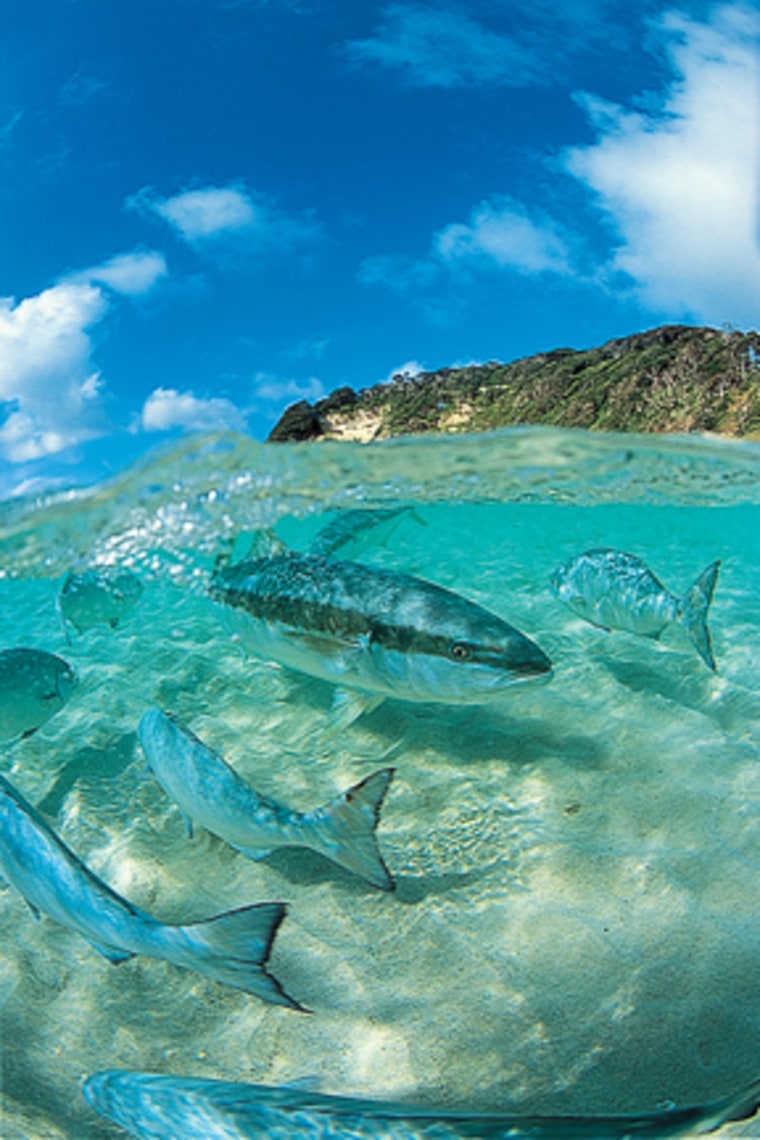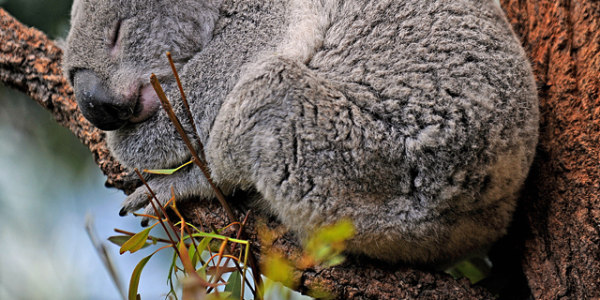On a continent where adventures are vast, where the outback and rain forest remain primal and unbroken, Australia’s Great Barrier Reef reigns supreme as a watery wonderland that defines the world’s view of this island nation.
Still a bit jet-lagged, I awoke on the Spoilsport that first night at about 4 a.m. As I looked out my window, I could see an endless horizon of stars. Unable to sleep, I ventured up to the empty (of course) sun deck to soak up the cloudless firmament of the unfamiliar Southern night sky. Once there, I noticed we’d moored in a glass-calm sea that reflected the twinkling heavens. It looked as if the Spoilsport had somehow ventured into the cosmos and was now perched both over and under an ocean of endless galaxies. The moment would prove auspicious, for we were moored over the wreck of the SS Yongala.
A Writhing Mass of Motion, Shape and Color
The Yongala is to underwater Australia what Uluru (Ayres Rock) is to the outback. Both sit on a flat plain in what is otherwise the middle of nowhere, both elicit awe and spiritual devotion, and both exceed the high expectations of every visitor who makes the Meccalike trek to explore their unique environments.
My dive buddy Dave White said it best. The Yongala has become much more important as a wreck than it ever was as a ship. In 1911, the steamer got caught in a cyclone and sunk with the loss of its entire crew of 121 souls. Despite legions of search parties, the wreck was not found until 1958. During the interim, this remote outpost of relief on an otherwise featureless, flat seafloor had become a haven and refuge for nearly every creature in tropical Australian waters. Lush and rife with life does not begin to convey the unpredictable and immense wildness of this site. I’m not usually prone to hyperbole because disappointment usually follows a grandiose proclamation, but I can calmly say it’s worth coming all the way to Australia just to dive this site and this site alone. I won’t say it’s perfect. The viz while we were there was about 30-40 feet, which, from everything I’ve heard, is fairly normal. And currents, sometimes challenging, sweep the hull almost constantly, requiring divers to pull themselves down the descent line until they’re in the lee.
People whisper about the Yongala in the back rooms of dive shops, though.
“Have you dived it?” they’ll ask, conspiratorially.
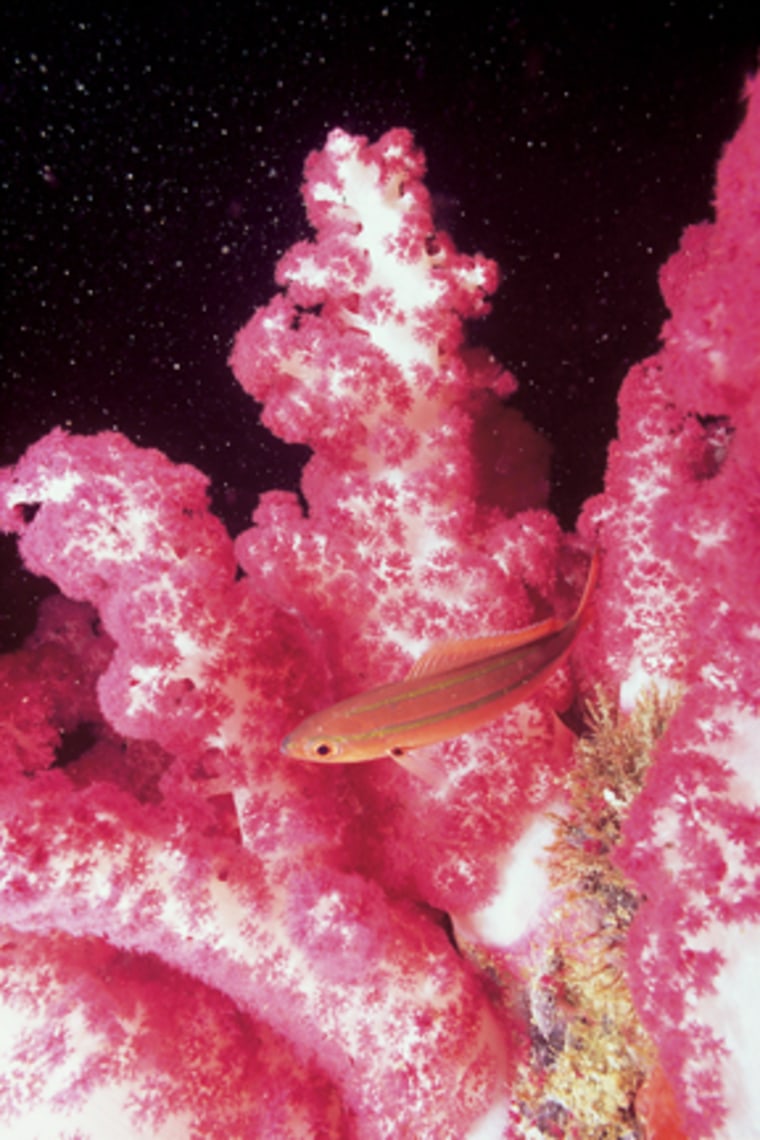
Then after you shake your head, they’ll say, “Somebody said it’s the best dive in the world,” as if they don’t want to commit to such a statement themselves. Not just any people, mind you — professional photographers, around-the-world divers and even the superblue cynics. I’m not sure about calling anything the world’s best, but our diverse group of 28 divers, from Holland, Austria, France, Italy and a troupe of Gigglin’ Marlins from Houston, Texas, had no difficulty making 10 dives in a row on the site. The crew, who visits this site week in, week out, jumped at every chance they could to get in the water as well. And in a world of been there, done that, what’s next kind of divers, that’s a thick and heavy statement.
We got lucky and moored up during two unprecedented days of flat, calm seas, as the unprotected site usually rests under choppy water. But once you descend, it’s as if the wreck contains some magical properties. Wade, the Spoilsport’s trip director for our week, called it a wreck on steroids, where marine life grows to massive, exceptional and seemingly unnatural proportions. Again, there was no exaggeration and no letdown upon descent.
Trevally were enormous, even scary in size, and almost unrecognizable as trevally. Green sea turtles, big enough to be classified as reefs, lazily napped along the wreck. Queensland groupers, hussar snappers and cobia hovered fat and happy in the shadows of the bow and stern. And olive sea snakes as thick as your arm ambled through the wreck with a savoir-faire and swagger that all venomous creatures seem to have. At night, large marbled and whiptail rays hovered in the current above the wreck, literally stacked up one upon the other, in a behavior called pancaking. During our night dives, we saw five stacked up, which was impressive enough, but the divemasters had stories of up to 20.
In between the big stuff, the wreck was literally a writhing mass of motion, shape and color. Thick aggregations of red soft corals and orange Tubastraea fought with yellow sea fans, orange encrusting sponges, and cockscomb and thorny oysters for a foothold on the surface of the wreck. Harlequin tuskfish, dozens of species of wrasse including humphead, riverlike schools of grunts, damselfish, anthias and surgeonfish, several types of angelfish and eel created a kaleidoscope of movement that formed like colored veils around the hull of the wreck. The density of life was staggering, like the work of an undersea madman. I got so dizzy trying to decide what to interact with during my first dive that I made it a grand total of 30 feet down the wreck. But luckily, Mike Ball Diving knows a good thing and lets divers truly enjoy this extraordinary site. After two days of exploring its 300 feet of artificial reef, almost everyone on board would’ve been happy just to stay on and keep diving it. But Australia’s natural wonders are considerable, and the coral outposts of the Coral Sea and the celebrated kingdoms of the Great Barrier Reef beckoned.
Dive Continent
As a country, Australia looms large in the minds of divers. Just in this one corner of this island continent, and especially in the tropical Northeast in the state of Queensland (about equal in size to Western Europe), there are vast possibilities for both underwater and topside adventure. Offshore, the Great Barrier Reef is a bewitching seascape that encompasses nearly 2,800 reefs, 900 islands and a massive living labyrinth of coral kingdoms that stretch for more than 1,250 miles. It’s a bastion that dominates the world’s perception of Australia. And it’s the first piece of underwater architecture that comes to mind for divers upon certification, and the first place nondivers ask about when they learn you’re a diver. For the aboriginal people, the reef is a place of beginnings — the story waters.
When speaking of the Great Barrier Reef, famed underwater photographer David Doubilet, after 25 years of diving and dozens of trips down under, says, “A new diver here is overwhelmed. An old diver begins to take the confusion for granted, and then at some point on every dive, there will be something new and wonderful.”
For me, understanding Australia’s offshore empires has become a personal obsession in which my successes have come in small measures. On land, it’s also difficult to convey the sheer size and timelessness of a place that has the world’s oldest living rain forest, the world’s oldest living civilization and, trapped in its rocks, the Earth’s oldest life-affirming fossils. So much of this continent is unique, and it has evolved in such exquisite isolation, that in some places, 80 percent of all living things exist only in that area. On this trip, I was headed to both the fascinating nether regions of the outback and the dripping-wet rain forest between diving, but first I was about to descend into the airlike liquid of the Coral Sea.
Sea Fan Safari
Sometime during the trip — I seem to remember that it occurred during the first briefing — Wade accosted us all with the same question: “What would you like to see?” Answers ranged from cuttlefish and mantas to wobbegong carpet sharks and stonefish. Dave replied, “I’ve always wanted to find a mermaid.” None of us said “sea fan,” but perhaps it was folly to ignore them because soon we’d be neck-deep in the land of mightily impressive and memorable giant fans.
“It’s the largest sea fan in the world,” Wade stated during our briefing at Cod Wall, our first stop in the remote undersea realms of the Coral Sea. “It’s 130 feet down, so mind your air. If you look over the side, you might be able to see it from the boat.”
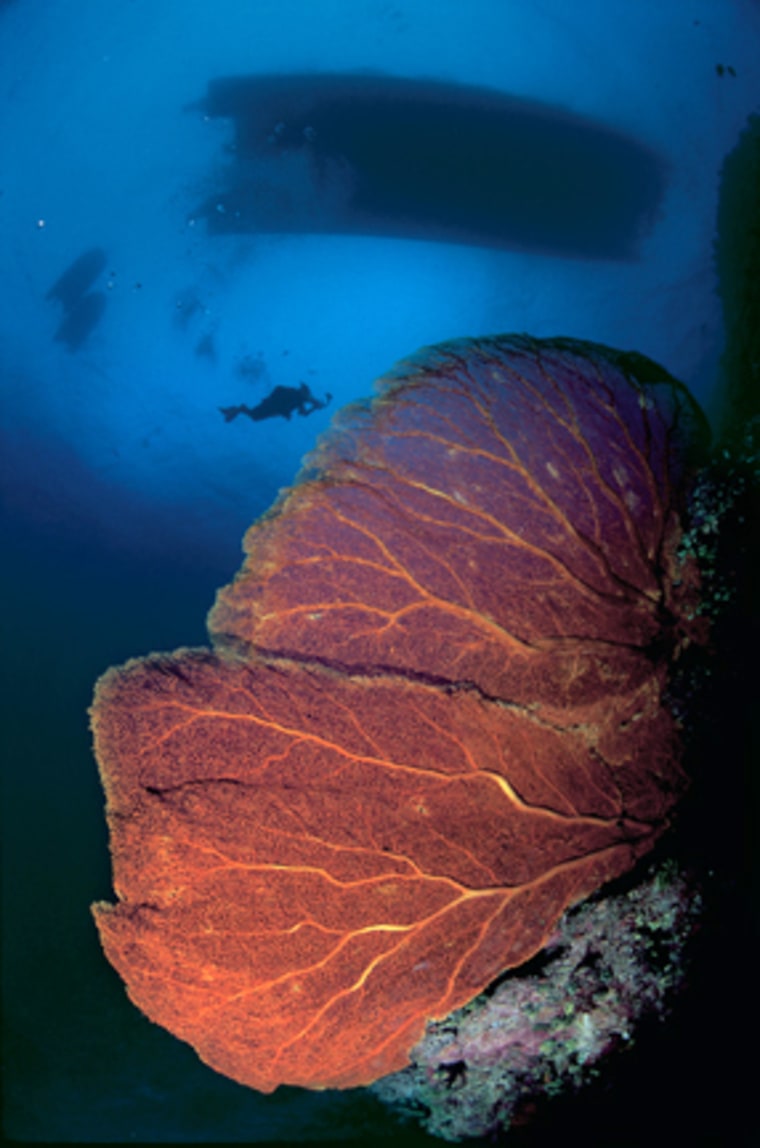
If not from the boat, you could certainly see the giant fan from the surface. The wall here was pockmarked with massive sea fans, and the so-called largest in the world was, indeed, a big mother, which looked even more colossal with 15 divers engulfed in its presence. I’d describe it and its local kin as more treelike than fan. I can say unequivocally that we didn’t see a larger fan on the trip, and the Coral Sea is rampant with them. Also rampant here was the viz. At this site, you could look up from 130 feet and read “Spoilsport” clearly on the side of the boat.
Our next site, Fanfare, exemplified much of what the Coral Sea is all about: stunning and aesthetic visuals and utter chaos. Healthy stands of sea fans and staghorn and plate corals, mingled with delicate, soft coral trees and carpets of anemones with their companion clownfish. Coral grouper, blue and brown chromis, coral-crunching parrotfish, Tridacna clams and the occasional cuttlefish dotted and decorated the landscape.
The remainder of the week was spent diving on one undersea delight after another. The shark feed at Scuba Zoo didn’t end up attracting numerous reef sharks, but those that showed up put on quite a show once we were safely tucked away in the cages and the bait bucket was opened. The sites on the Flinder’s Reef portion of the Great Barrier Reef proved to be multi-layered, vibrant and crowded with great stands of hard corals harboring anemonefish, legions of chromis, bizarre nudibranchs and hundreds of the more than 2,000 species of fish that call the Great Barrier Reef home.

Those of us trying to maintain a semblance of a tidy waistline made every dive we could. This was not so much out of fanaticism but to squeeze every ounce of what exercise diving offers and to counteract the culinary miracles Susi the cook managed to concoct in the galley. Suffice to say, the food aboard left no one unsatisfied. And for any first-timers considering a live-aboard, you’ll feel secure to know that the skipper, Mike Maxwell, was on his 715th expedition, all logged in two captain’s logbooks that are a marvel in themselves, as they represent an almost-complete history of Mike Ball diving in this area. You will not find a skipper more intimate with these waters. He can read and navigate these seas better than he can cross the street back in Townsville, Queensland, which means you get the best possible location for each day of diving. Plus, he looks great in a dress (a small quirk that comes out on barbecue night).
Waterfalls, Kangaroos and the vast Outback
Back on land, we said farewell to our new friends (especially the wacky bunch of Gigglin’ Marlins from Texas), and Dave and I headed up to Wallaman Falls, the tallest waterfall in Australia, which tumbles nearly 1,000 feet down a basalt cliff. Now my buddy Dave is a genuine ex-Navy SEAL. So, before we got on the boat, I told him that he couldn’t blow up or kill anything (at least until the end of the trip). He’d done well so far, though he mumbled something about placing limpet mines on the keel in his sleep. But now we were headed deep into the uninhabited rain forest and, well, instincts are instincts. So, with a stern warning that tourists were not the enemy, off we went.
The thing about waterfalls is, all that water has to come from somewhere. And in a rain forest, it doesn’t take a rocket scientist to figure out from where. As we drove on the increasingly narrow dirt road, the rain and clouds began to press in, and despite our high-noon arrival, the primeval forest was cloaked in the sealed-in hush of a cloud-gray dimness. In short, it was perfect, especially for Dave, whose SEAL nature thrived in wet, miserable conditions. He was positively ecstatic when we hit the trailhead. We couldn’t have asked for a more authentic experience, and it was worth every foot of the 1 mile trek and the 60 cubic feet of rain that fell on our heads to see the falls (there’s an overlook, but the low clouds shrouded our view). The sun even briefly broke through the clouds once we hiked in.
With Wallaman Falls behind us and Dave heading back home, I took the “hire” car and headed to Queensland’s scorched red heart to continue my antipodean adventure in the significantly drier outback. There was no use coming halfway around the world and not indulging in some of this amazing continent’s natural wonders.
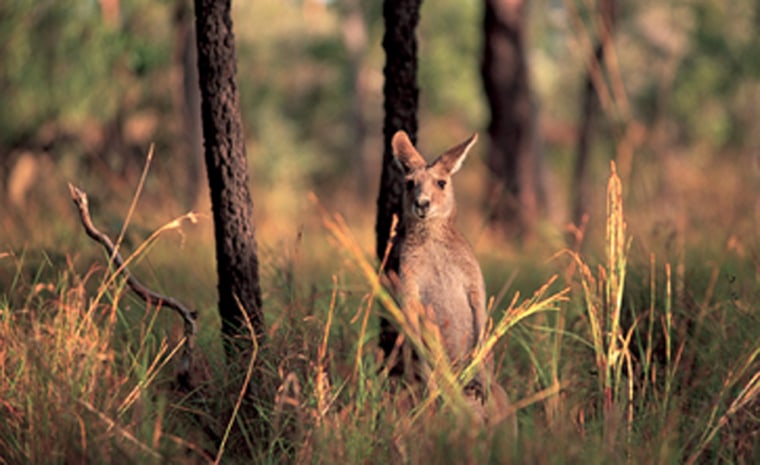
Since the Wallaman Falls detour set me behind schedule by a few hours, I pressed hard to get to the Undara (Lava Tubes) Lodge in time to check into my room and found myself driving through the fog, down a single lane (with red-dirt soft shoulders) road, at about 140 kph (that’s only about 55 mph, right?). As I drove, massive 18-wheelers loomed out of the darkness, and I had to ease over to the slippery dirt shoulder and send up a roostertail of red dust and rocks, all while swerving and skidding to avoid families of kangaroos jumping across the road, and the odd cow that preferred roadside grass to the miles of grass that stretched out from either side of the road. It wasn’t until I’d arrived at the Undara Lava Lodge (and run out of paved road altogether) that I was told that driving along the road I’d just come in on was extremely dangerous at night for just those reasons. Hmm … no wonder I didn’t see any other cars.
Bush Camp
My lodgings at Undara were in a charming, converted, turn-of-the-century railway carriage. I felt like somebody took the train that goes to Harry Potter’s beloved Hogwarts and plopped it in the middle of the outback. The wood paneling, leather seat and brass fittings were all intact. Early — and I mean early — the next morning, the kookaburras shattered the silence with calls that did not sound like bucolic kookaburras laughing in the old gum tree. The sounds of murder would be an apt description of the noise that erupted just outside my window. But it let me know right off that I was in the wilderness.
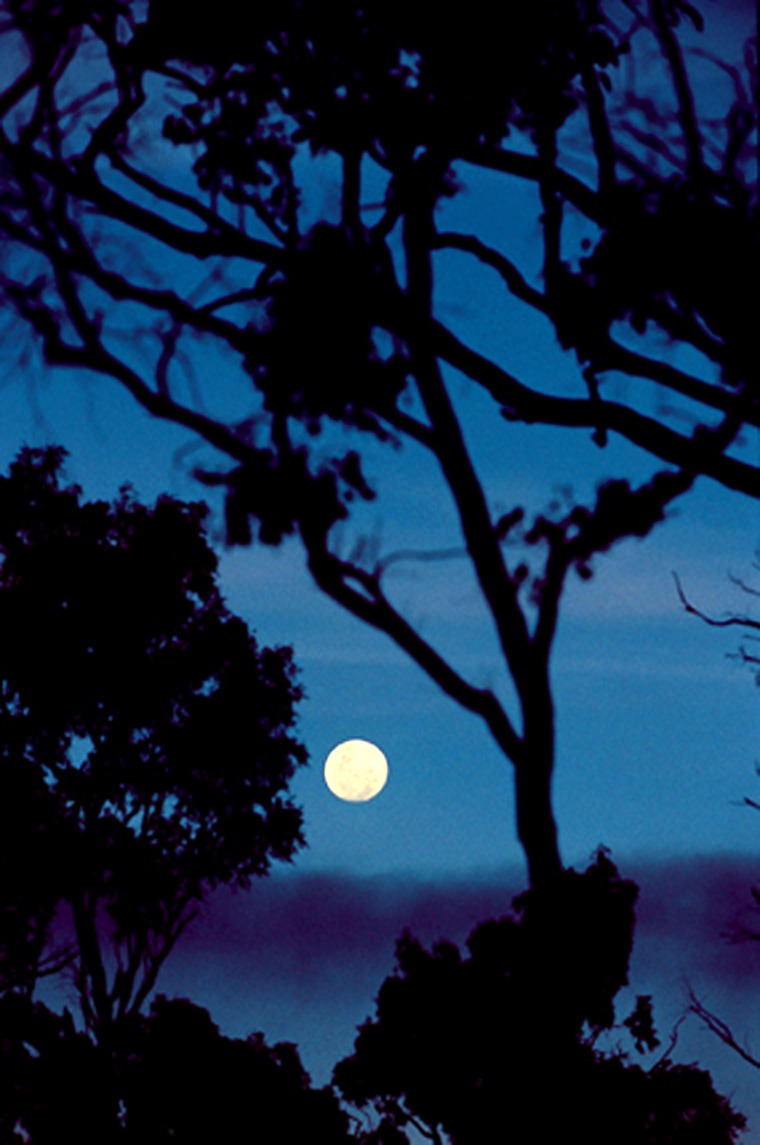
Bush breakfast at Undara is an outside affair at Ringers Camp, with eggs, bacon, beans, toast and “billy” tea all cooked over an open fire and served on tin plates and cups. Log stumps act as the chairs and tables. It’s like camping, and the immense landscape of the outback serves as the backdrop, complete with kangaroos (with joeys in their pouches) hopping past in the trees and a morning chorus of birds (most sound more pleasant than the kookaburra. But in addition to the abundant wildlife, it’s the massive lava tubes that make Undara famous, and that’s just where I was headed for the day.
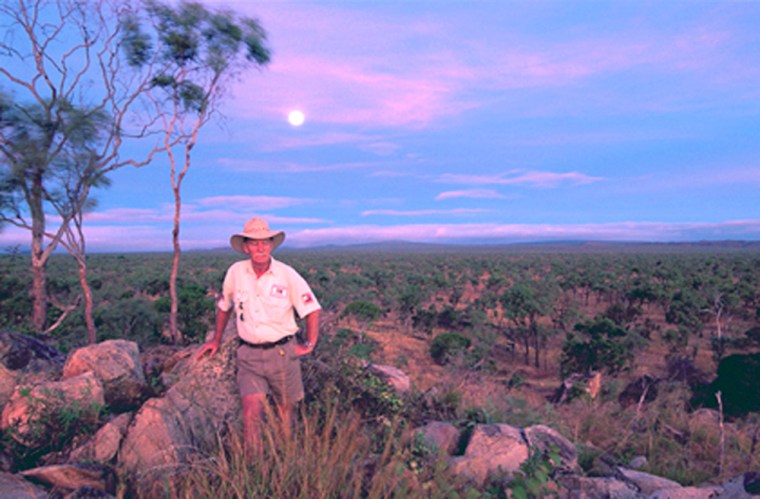
It seems that 190 million years ago, Undara was a seething plain of lava, which flowed from no fewer than six now-dormant craters in the local area. Lava tubes form during cooling, and there are miles of them here. The tours are led by what are known as Savannah Guides, highly respected, trained and knowledgeable professionals who are an incredible source of information on everything from local flora and fauna to aboriginal customs. Norm, our guide, even found a wallaby hidden just a few feet off the trail.
At dusk, I joined another Guide, Tony Speedie, for a wildlife tour that included both a breathtaking sunset and a full moonrise seen from atop a lookout, which lit the outback in a silvery sheen of pinks and reds. We also saw many of the 42 kinds of kangaroos that call the area home. After the last fingers of light slipped over the horizon, we headed off to a place called Barker’s Tube, where thousands of tiny bats erupted, their sonar squealing around our heads, to feed during the night. Snakes gather here to hang from the tree branches just outside the opening to try their luck at catching a bat snack.
Hot Springs and millaa millaa
The next morning I was back on the road, this time in daylight, for the four-hour drive to Cairns. Along the way, I stopped at the Innot Hot Springs, which is a geothermal-heated river, and soothed my aching feet in the hot sands. I visited several more waterfalls including Australia’s widest, Millstream Falls, and the waterfall trail around Millaa Millaa, in the middle of a pastoral dairy land more reminiscent of England or the rolling hills of Wisconsin than the rain forest of Queensland, Australia.
Back to the Great Barrier Reef
After checking in at the Holiday Inn on the Cairns Esplanade, I readied my gear for the next day’s dive adventures, then set off to the bustling Night Markets to soak up some local flavor.
By 8 a.m. the following day, I was headed to Milln Reef aboard one of Tusa’s fast and efficient day boats. I have been coming to Cairns for several years and always include at least a few dives with PADI operator Tusa.
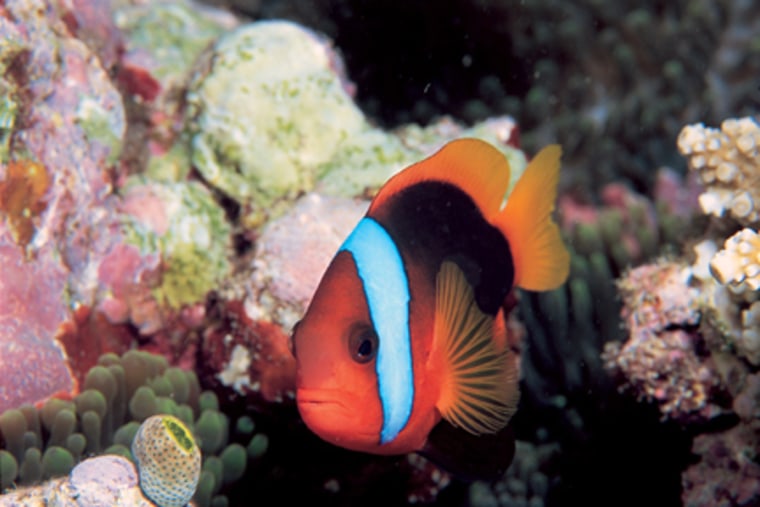
Our first dive at a site called Three Sisters, which consists of three coral bommies, was one of the best I’d ever done from a Cairns day boat. A big school of blue and gold fusiliers circled one of the bommies, sea fans crowded a narrow gap between two of the Sisters, and almost everyone aboard had a nice encounter with both turtles and a couple of small reef sharks. At several places, spinecheek and pink anemonefish jittered about their anemone lair, and off over the sand, a couple of massive barracuda watched the parade of bubble-blowers. The third bommie featured some outstandingly healthy corals off its deep side.
For our second dive, the skipper moored at a site called Swimming Pool 2. With several patch reefs and a shallow hard coral shelf, Swimming Pool 2 is the quintessential shallow Great Barrier Reef experience and was a great way to end my trip to the land of Oz, as Australia is aptly known. Here, purple, yellow, brown and blue hard corals reach nearly to the surface in the dance between light and water that embody the polyp-by-polyp growth cycle that has, in 18,000 patient years, turned a piece of barren seafloor into a colossal 1,250-mile-long underwater playground, for which there is no peer on the planet.
Special thanks to the Australian Tourist Commission, Queensland Tourism, Qantas Airlines, Mike Ball Dive Expeditions,TusaDive, Holiday Inn and the Undara Lodge. Visit www.padi.com for a complete list of dive operators in the area.
As the official publication of the is the magazine divers turn to each month to find out what’s going on in their world. Sport Diver is the ultimate source for up to date information on dive culture, equipment, travel, training and PADI Diving Society activities.
